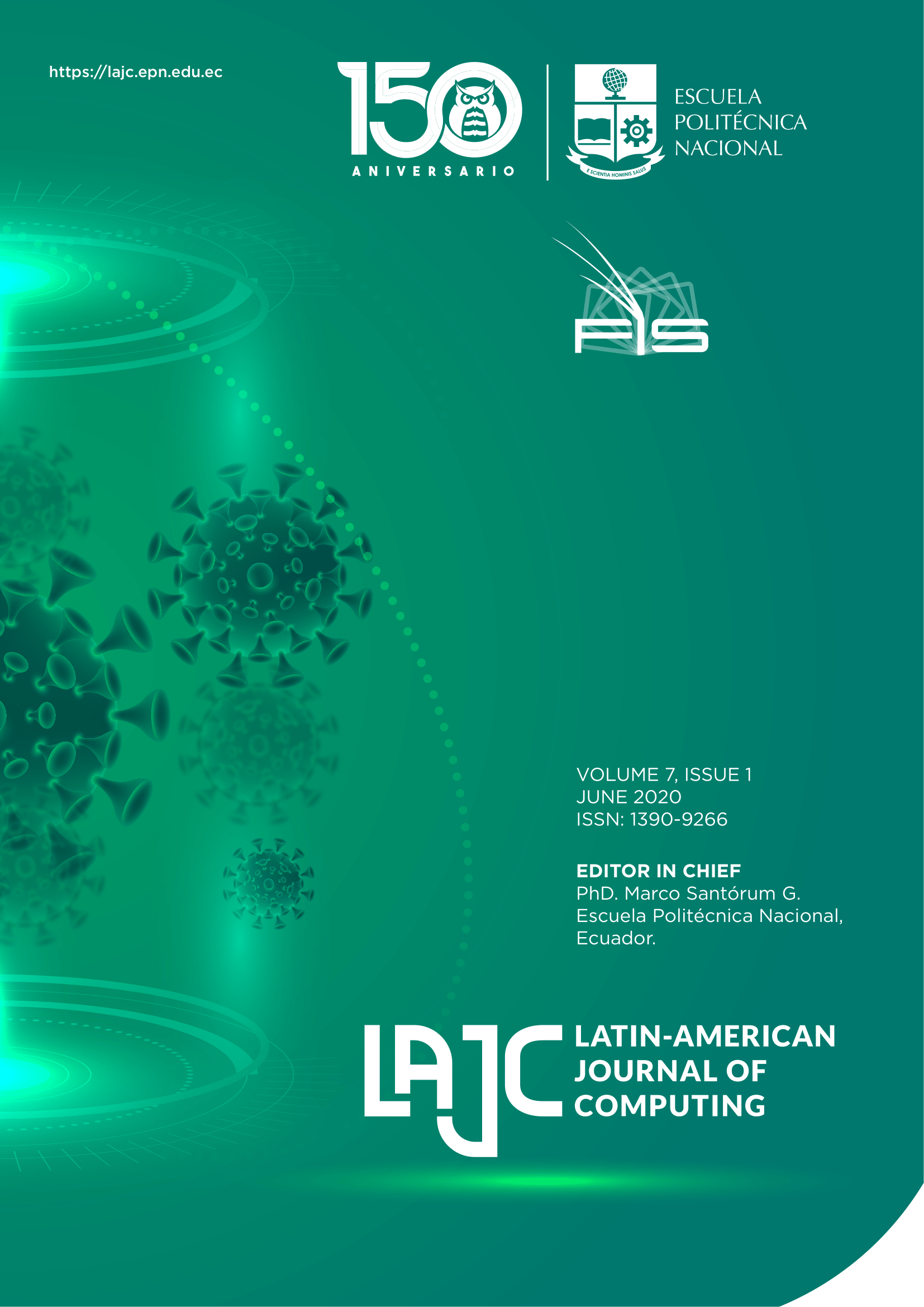Evaluation of the functionalities of the intrusion detection systems based on the network of open source platforms using the anomaly detection technique
Keywords:
Technology and science of engineering, networks, Snort, computer security, information systems, Suricata (tool), Bro (tool), intrusion detection system (ids), anomalies of information systemsAbstract
The purpose of this research work is to evaluate the functionality of the intrusion detection systems (IDS) based on Open Source platforms using the anomalies detection technique, defining several concepts about intrusion detection systems. For the evaluation of the IDS a methodology based on the application and quasi-experimental research was used, considering the existing knowledge and the implementation of the cases of: learning, simulation of attacks and application by means of virtual scenarios, on which they were installed the Snort, Suricata and Bro IDS and the different Benchmark tools. The correlation of the alerts issued by both Snort and Suricata using the anomaly detection technique based on statistical data, allowed to determine the true positives (TP) for the effective alerts and the false negatives (FN) for the anomalies.
Downloads
References
GMS, "Gms presento recomendaciones para prevenir ataques ciberneticos en instituciones educativas," [Online]. Available: https://tinyurl.com/y9dul7ks [Accessed: Apr.18, 2020].
J. Maestre, "Sistema para la correlación de alertas de NIDS basados en anomalías," Universidad Complutense, Madrid, 2013.
J. Rivero, B. Ribiero and K. Ortiz, “Comparación de algoritmos para detección de intrusos en entornos estacionarios y de flujo de datos,” [Online]. Available: http://scielo.sld.cu/scielo.php?script=sci_arttex-t&pid=S2218-36202016000400004. [Ac-cessed: Apr.18, 2020].
L. Moreno, “Plataforma presidencial,” [On-line]. Available: https://minka.presidencia.gob.ec/portal/usuarios_externos.jsf. [Accessed: Jun. 12, 2020].
V. Carlos, “CCM sistema de deteccion de intrusiones,” [Online]. Available: http://es.ccm.net/contents/162-sistema-de-de-teccion-de-intrusiones. [Accessed: Apr.18, 2020].
Rediris, “Sistemas de detección de intrusos,” [Online]. Available: https://www.rediris.es/cert/doc/unixsec/node26.html. [Accessed: 18 April 2020].
D. Ortego, “Snort: Primeros pasos,” [On-line]. Available: https://openwebinars.net/blog/que-es-snort/. [Accessed: Apr.18, 2020].
J. Gómez, “Optimizacion de sistemas de deteccion de intrusos en red utilizando tecnicas computacionales avanzadas,” [Online]. Available: https://tinyurl.com/yc-tjb9oo. [Accessed: Apr.18, 2020].
IDS/IPS, “Descripción y características de Suricata,” [Online]. Available: https://blog.elhacker.net/2017/04/ids-ips-suricata-re-glas-rules.html. [Accessed: Apr.18, 2020].
J. A. Astudillo Herrera, A. A. Jimenez Ma-cias and F. M. Ortiz Flores, “Adaptación del ids/ips suricata para que se pueda conver-tir en una solución empresarial,” [Online]. Available: http://www.dspace.espol.edu.ec/xmlui/handle/123456789/19502. [Accessed: Apr.18, 2020].
G. M. I. Giménez, “Utilización de Sistemas de Detección de Intrusos como elemen-to de Seguridad Perimetral,” [Online]. Available: www.adminso.es/recursos/Pro-yectos/PFC/PFC_marisa.pdf. [Accessed: Apr.18, 2020].
Downloads
Published
Issue
Section
License
Copyright Notice
Authors who publish this journal agree to the following terms:
- Authors retain copyright and grant the journal right of first publication with the work simultaneously licensed under a Creative Commons Attribution-Non-Commercial-Share-Alike 4.0 International 4.0 that allows others to share the work with an acknowledgement of the work's authorship and initial publication in this journal.
- Authors are able to enter into separate, additional contractual arrangements for the non-exclusive distribution of the journal's published version of the work (e.g., post it to an institutional repository or publish it in a book), with an acknowledgement of its initial publication in this journal.
- Authors are permitted and encouraged to post their work online (e.g., in institutional repositories or on their website) prior to and during the submission process, as it can lead to productive exchanges, as well as earlier and greater citation of published work.
Disclaimer
LAJC in no event shall be liable for any direct, indirect, incidental, punitive, or consequential copyright infringement claims related to articles that have been submitted for evaluation, or published in any issue of this journal. Find out more in our Disclaimer Notice.










